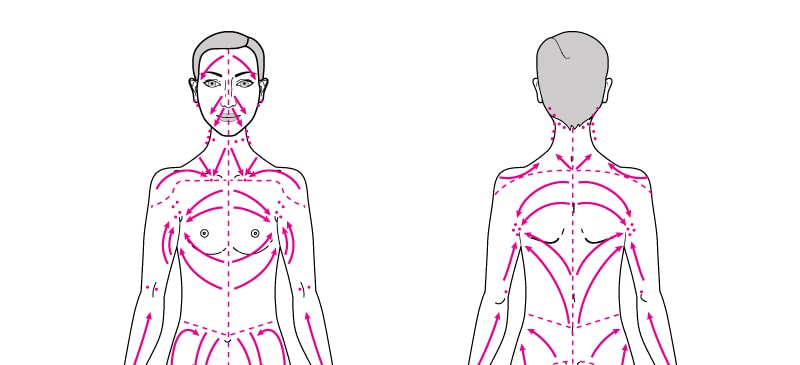HT6. How to clear your sinuses in seconds with nothing but your fingers.
Blocked sinuses are a common health issue that affects people of all ages. Whether it’s due to allergies, colds, or even changes in weather, sinus congestion can leave you feeling uncomfortable and drained. While medications are a go-to solution for many, they’re not the only option. In fact, there are effective, natural alternatives that don’t require a trip to the pharmacy. These techniques work on physical principles rather than chemicals, offering a simple, drug-free way to relieve discomfort.
One such method is Lymphatic Drainage Self-Massage (LDM)—a gentle, non-invasive massage technique that’s easy to learn and incredibly effective for sinus relief. This simple method taps into the body’s lymphatic system, which plays a crucial role in fluid balance and immune function. Since sinus congestion often involves fluid buildup, using this massage can help promote drainage and provide quick relief.
What Is Lymphatic Drainage Self-Massage?

Lymphatic massage has been widely used to treat conditions like lymphedema by encouraging the flow of lymphatic fluid through the body. According to the Mayo Clinic, this technique helps improve lymph circulation, reduce swelling, and enhance overall immune response. The sinuses, as part of the lymphatic system, can greatly benefit from this approach. By gently stimulating the right areas on your face and head, you can help your body clear out the excess fluid causing the congestion.
The best part? It only takes a few minutes and requires nothing more than your fingertips. If you’ve been dealing with a stuffy nose, heavy head, or plugged ears, this is a method you can try right away—provided it’s safe for you to do so.
Is It Safe for You? Key Considerations Before You Begin

Before jumping into lymphatic massage, it’s important to ensure it’s appropriate for your situation. Certain health conditions can make this technique unsuitable or even risky. Here are some contraindications to be aware of:
- Fever or Severe Infections: If you’re experiencing an infection or are in the acute phase of an illness (fever, severe inflammation), wait until these symptoms have subsided before attempting lymphatic massage.
- Circulatory System Issues: Conditions like thrombosis, embolism, or phlebitis may be aggravated by LDM. Consult a doctor if you have any circulatory concerns.
- Heart Conditions: For individuals with heart disease, acute angina, or coronary thrombosis, LDM may increase fluid pressure on the heart. Always seek medical advice in these cases.
- Active Cancer or Undiagnosed Lumps: Avoid LDM if you have an active malignant tumor or any unexplained lumps. A healthcare provider should evaluate these issues first.
- Bleeding Disorders: Refrain from LDM if you’re experiencing internal or external bleeding.
- High-Risk Pregnancies: If you’re in the later stages of a complicated pregnancy, avoid LDM unless approved by your obstetrician.
If you notice any of these symptoms or conditions, consult your healthcare provider before proceeding. Always err on the side of caution when trying new remedies, especially if you’re managing underlying health issues.
How to Perform Lymphatic Drainage Massage for Sinus Relief

If you’ve ensured this technique is safe for you, it’s time to give it a try. Lymphatic drainage massage is simple to perform and requires no special equipment—just clean hands and a few quiet moments. Here’s a general overview of how to do it:
- Start with Clean Hands and a Relaxed Posture: Wash your hands thoroughly to prevent introducing any bacteria to your skin. Sit comfortably and take a few deep breaths to relax your body.
- Target the Right Areas: Focus on the areas around your sinuses, including the bridge of your nose, under your eyes, your cheekbones, and your temples. These are key points for lymphatic flow.
- Use Gentle Pressure: Using your fingertips, apply light, rhythmic pressure to these areas. Avoid pressing too hard; the lymphatic system responds best to gentle, repetitive movements.
- Work in an Upward and Outward Direction: For optimal results, massage in motions that guide the fluid away from your sinuses and towards the lymph nodes located near your ears and jawline.
- Stay Consistent but Brief: Spend about 3–4 minutes massaging these areas. You can repeat this process a few times throughout the day as needed.
When to Seek Medical Advice

While lymphatic massage can provide immense relief, it’s not a substitute for professional medical care. If your sinus issues persist or worsen despite trying this method, or if you experience additional symptoms like severe pain, high fever, or unexplained swelling, consult your doctor immediately.
Ready to Give It a Try?
If you’re ready to clear your sinuses naturally, check out the video tutorial below to see how this massage is done. Follow the steps carefully, and enjoy the soothing relief it can bring!
Remember, your health is your most valuable asset. Always prioritize safety and consult a healthcare professional if you’re unsure about trying any new techniques.
This expanded version provides more details while maintaining a user-friendly and informative tone. Let me know if you’d like additional adjustments!













